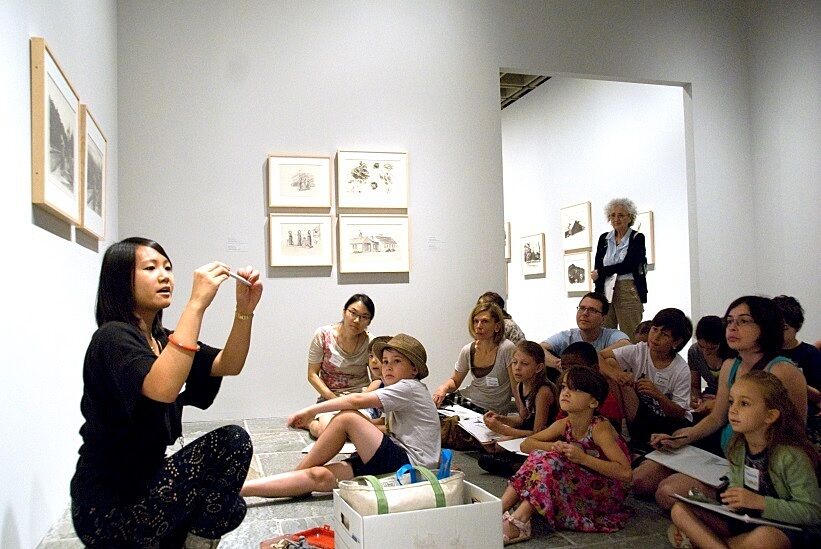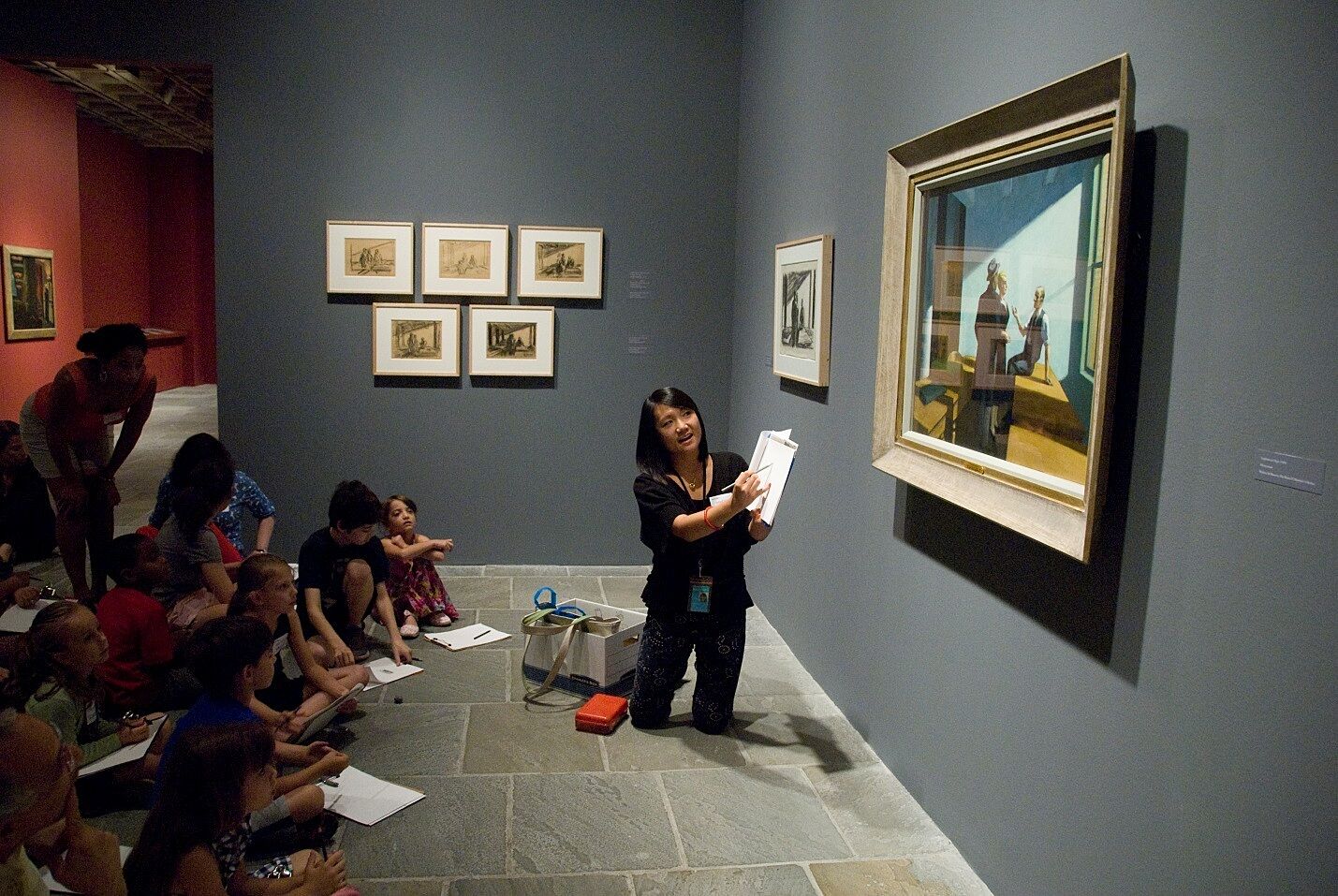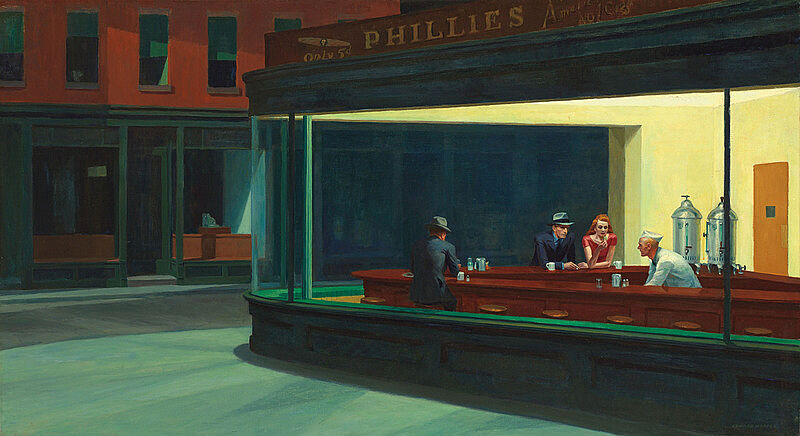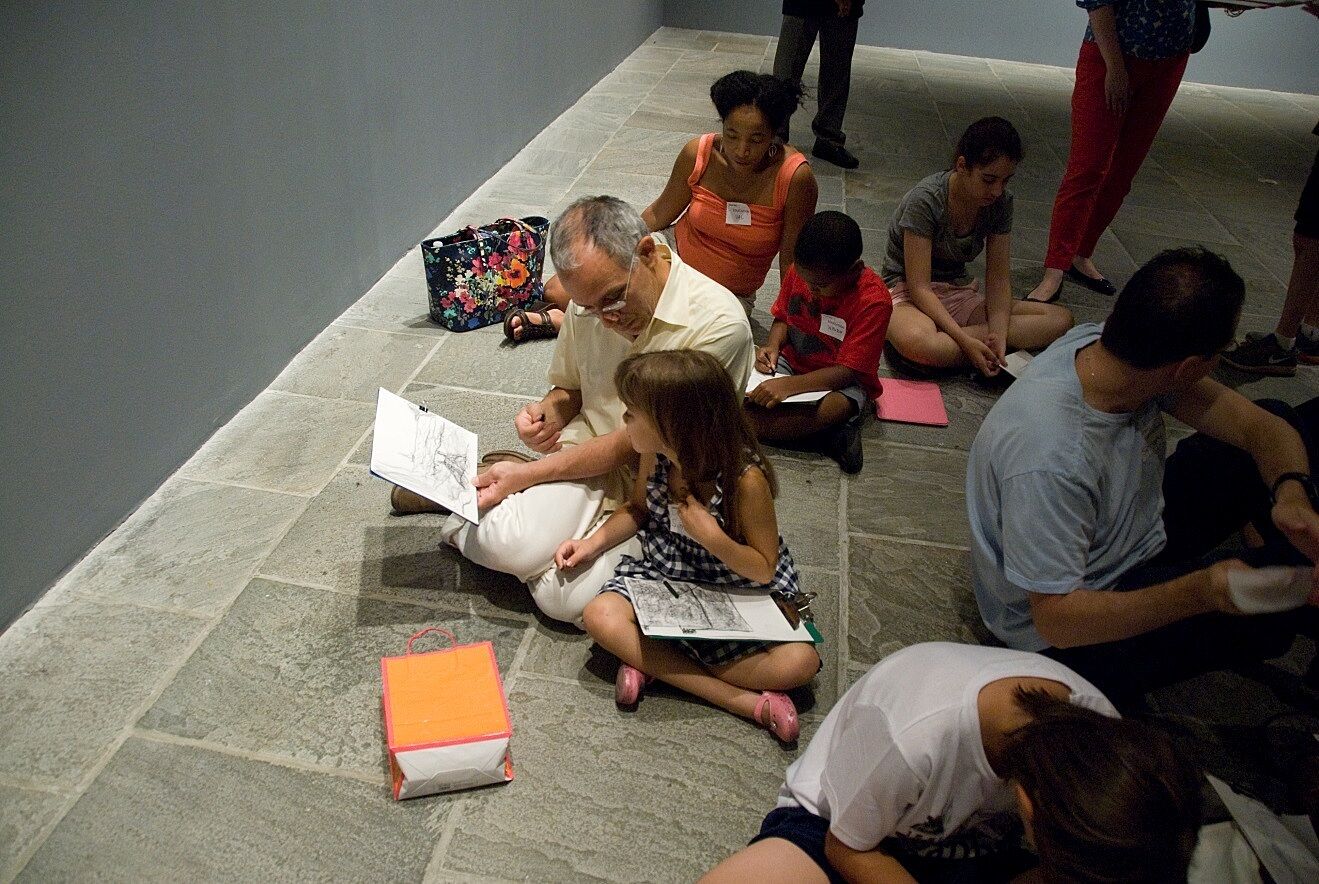Ready, Set, Sketch! Hopper Drawing
Sep 20, 2013
For the exhibition Hopper Drawing, Family Programs introduced a new series of sketching tours. Families were invited to engage with Edward Hopper’s drawings and paintings and experiment with different drawing techniques, such as sketching objects from life, playing with mark making to achieve different textures, and experimenting with some of the drawing materials that Hopper used, like charcoal.
The first month of programs offered an introduction to Hopper’s drawing practice, followed by a focus on his depiction of interior and exterior spaces, his use of tone and light, and finally a discussion about how his drawings informed his paintings.
On the tours, families looked at three to four works and participated in related sketching activities and discussion. For example, at Hopper’s Conference at Night (1949), families were asked to choose the most important lines in the painting by sketching the artwork in only ten moves of their pencil. Parents and kids were challenged to look closely at the composition and carefully consider every movement of their hand as well as the resulting marks on the paper.
At one of Hopper’s most well known paintings, Nighthawks (1942), families learned that the artist often used his wife Jo as a model for his artworks. He drew her from observation and later used his imagination to change details about her appearance, adding a red dress or altering her hair to create some of the characters in his paintings. Participants took inspiration from Hopper’s process and drew their moms, dads, sisters, or brothers from life and then transformed them into different characters.
As kids and parents alike focused on their sketches, the level of concentration was intense. All that could be heard in the galleries was the soft swish of pencils gliding across the paper. At the end of the tour, families were given Hopper Drawing Activity Guides and a pencil so that they could continue the experience of drawing throughout the exhibition.
Find out more about the Whitney’s Family Programs.
By Billie Rae Vinson, Coordinator of Family Programs




